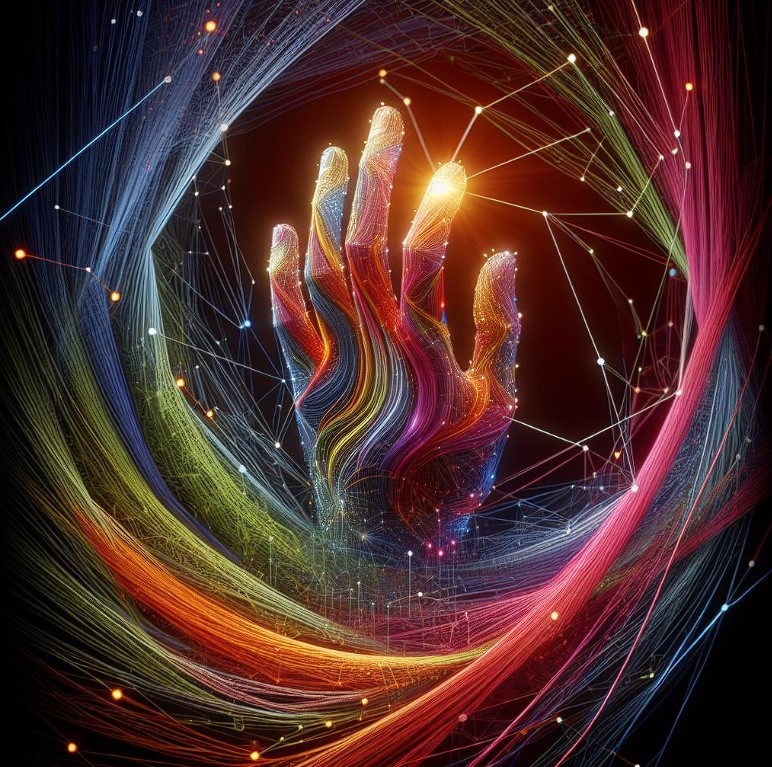
In the ever-evolving landscape of technology, AI has emerged as a powerful tool that’s transforming industries across the board. For many Agilists, however, this rapid technological advancement has sparked a deep-seated fear. For Scrum masters and Agile practitioners, there has arisen a sinister feeling, as they are forced by this recent development and surge to wonder: Could AI invalidate the need for Agile practitioners? With companies investing heavily and becoming increasingly dependent on AI-driven tools and, in some cases, laying off or resisting the hiring of Scrum Masters, the anxiety is palpable. But when it comes to the Agile frameworks — a dynamic approach that thrives on collaboration, creativity, and adaptability—can AI truly replace the human element? Let’s explore why the answer is a resounding no!
Can Machines Really Understand Human Emotions?
Machines do amazing things. Yes, we need them to do a lot of heavy lifting for us. But, think for a moment about the last time you had a team meeting. Was it just about sharing data and updates? Or was it also about reading between the lines, understanding the unspoken words, reading body languages, and propelling the team towards a common goal? In the world of Agile, you cannot possibly place a price on the value of these human interactions. AI might be able to remind you of a deadline, but can it sense the subtle tension in a room and diffuse it? Can it inspire a team that’s feeling demoralized? The truth is, emotional intelligence—an essential element in Agile—is something that is simply beyond the reach of AI’s capabilities.
According to Daniel Goleman, the author of Emotional Intelligence, “In a very real sense we have two minds, one that thinks and one that feels.” AI operates in the realm of the thinking mind but falls short when it comes to feelings.
Where Does Innovation Really Come From?
We often hear about AI’s ability to process vast amounts of data, but can it truly innovate? Innovation isn’t just about crunching numbers; it’s about seeing possibilities where none seem to exist. It’s about asking “What if?” and daring to pursue uncharted paths. AI operates within the confines of its programming and data, but human creativity knows no bounds. Yes, the data processed by AI is critical when making decisions.

But, data alone in itself gets you nowhere. Innovation results from a lot of trials, experimentations, failures and the concomitant lessons, creativity, pressures from competing brands, needs, societal changes/demands, conscious and subconscious ideas, collaboration and analysis of diverse perspectives – all of which is within the realm of humans.
As Steve Jobs once said, “Creativity is just connecting things.” Humans excel at making these unexpected connections, leading to groundbreaking innovations. AI, however, lacks the consciousness to make such leaps.
Is Flexibility a Strength of Machines?
Agile is synonymous with adaptability. Changes could happen at any given time which inturn requires quick adaptation to remain relevant and true to the pain points of the end-users. But how flexible can AI really be? Imagine a situation where market dynamics change overnight, and the project needs a sudden pivot. AI might tell you what happened, but it won’t tell you why it happened—or more importantly, how to respond creatively. Humans, on the other hand, excel at making quick decisions with information, weighing risks, and navigating uncertainty.
According to a report by the Harvard Business Review, “The ability to pivot and quickly adapt is a distinctly human trait, rooted in our consciousness and experiential learning.” This adaptability is the cornerstone of Agile mindset and frameworks.
Who Would You Trust to Lead—A Machine or a Person?
When you think of leadership, do you envision a machine or a person? Leadership in Agile isn’t just about task management; it’s about guiding, mentoring, and inspiring a team to achieve collective goals. Can AI mentor a junior team member, understand their struggles, and help them grow? Can it lead a team through a crisis, balancing empathy with decisiveness?
As leadership expert John C. Maxwell states, “Leadership is influence—nothing more, nothing less.” Influence requires trust, rapport, and emotional connection, aspects where AI falls short.
Can AI Make Ethical Decisions?
In Agile, decisions often have ethical implications. Whether it’s deciding how to prioritize features that will impact user privacy or managing customer expectations with transparency, these decisions are complex and nuanced. AI operates on logic and data, but can it weigh moral considerations? Can it discern right from wrong in a way that aligns with human values? Is there anything like moral consciousness in the world of AI? If AI has no feelings, how would it understand the terms of morality so as to even give it some form of consideration?
Philosopher and cognitive scientist Daniel Dennett aptly points out, “The first step toward thinking ethically is to think humanly.” Ethical decision-making is deeply rooted in human values and societal norms, areas where AI lacks true comprehension.
What About Intuition—That “Gut Feeling”?
How many times have you relied on a gut feeling to make a decision in your work? In Agile, intuition is often the secret sauce that guides teams to success, especially in situations where data is scarce or inconclusive. Agile thrives in very complex environments where little or nothing is known and yet, you’ve got to follow your gut feelings and make decisions so as to maintain a steady cadence with or without data. AI can analyze patterns, but can it tap into the years of experience, the lessons learned, and the subtle cues that inform human intuition?
Malcolm Gladwell, in his book Blink, emphasizes the power of human intuition: “Decisions made very quickly can be every bit as good as decisions made cautiously and deliberately.” This snap judgment is an area where humans excel over machines.
The Verdict
Can AI replace humans in the Agile industry? The answer is a resounding NO! While AI’s impact in enhancing and supporting Agile processes can never be overemphasized, it cannot replace the human attributes that are critical to Agile’s success. Hence, humans will always be central to Agile. Collaboration, creativity, flexibility, leadership, ethical decision-making, and intuition are all areas where humans excel—areas that AI cannot fully replicate.
A study by the MIT Sloan Management Review concludes, “The most effective teams will be those that can integrate AI’s capabilities with human judgment and experience.” The future of Agile isn’t about choosing between humans and AI; it’s about harnessing the strengths of both, with humans leading the charge.
#AgileMethodology #AIinAgile #HumanTouchInAgile #Innovation #LeadershipInAgile #EthicalDecisionMaking #Intuition #AgileIndustry #AIvsHuman #AgileTeams #Agileframeworks #Agilescrum #IT #AItechinagile #technologyvshumans
References:
1. Goleman, D. (1995). Emotional Intelligence. Bantam Books.
2. Jobs, S. (n.d.). BrainyQuote.
3. Harvard Business Review. (2018). The Agile Manager’s Guide.
4. Maxwell, J. C. (1998). The 21 Irrefutable Laws of Leadership. Thomas Nelson.
5. Dennett, D. C. (2013). Intuition Pumps and Other Tools for Thinking. W. W. Norton & Company.
6. Gladwell, M. (2005). Blink: The Power of Thinking Without Thinking. Little, Brown and Company.
7. MIT Sloan Management Review. (2019). AI and the Future of Work.

It’s thought-provoking and well written! AI enhances Agile but can never replace the human touch as empathy, creativity, and leadership will remain essential for true collaboration and innovation. The balance of AI and human judgment is what drives the best results. Thanks for sharing this post!